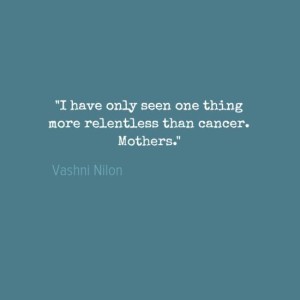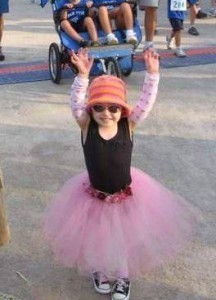Donna Day
When I opted to write under a pen name, it was because my previous writing wasn’t really conducive to young adult books. You see, I’ve written a lot about childhood cancer. I felt like that difficult of a subject should be kept separate from the light, airy fiction that I was writing. But, it turns out you write what you know, and since the original drafting of Underground Rose, I’ve come to know childhood cancer intimately. Although I never intended for it to happen like it did, the next story fell into my mind in one fell swoop while driving one day, and I was not surprised to find that cancer was integral to the plot.
So, if I’m going to write about it, I might as well write about it.
I am a cancer mom. This is a title I freely give myself. Yet, four years ago, the thought of such a horror would have been unimaginable. Although my son’s prognosis is good, I grieve the loss of what once was; what could have been. And grieving people need an outlet. Mine is the written word. Studies show that the parents of cancer patients go through the stages of grief. Some will even suffer from symptoms of, or full-blown, PTSD. In the months and years since my family joined this awful club, I’ve processed my grief through writing, and I feel like I’m coming out of the end of a very long, dark tunnel. But this experience will always be a part of my family’s history; a part of me. I don’t think it’s going to work to try and silence it, when I still so actively fight for something better for the next generation of children with cancer.
Today is a day that I have a hard time not blogging about childhood cancer. You see, I have this friend who writes under the name Mary Tyler Mom. Her daughter Donna died from an aggressive brain tumor, and for years now, she’s been a relentless advocate for better treatments, more funding for research, and a better quality of life for children with cancer. She also runs a 501c charity called Donna’s Good Things that helps underprivileged kids in all sorts of circumstances to live a more joyful life. Donna was a very joyful child, and Mary Tyler Mom wants other kids to have an opportunity to experience that kind of joy, too.
Every year, Donna’s Good things hosts a humongous event through St. Baldricks. People come and shave their heads in honor of kids fighting cancer. Other people donate money for the fun and privilege of seeing people come and shave their heads — and also because they know that this money is going straight to St. Baldrick’s, which is the largest non-government organization that funds research for pediatric cancer in our country.
Basically all the bloggers she knows then get together and blog about it, share with their readers, and hope for the best. More than $230k proves that it has worked very well so far. That is enough to fund a study that could be THE cure for at least one kind of cancer. That’s something I can’t not be a part of.
One of the bloggers said something so poignant that someone already made a meme poster out of it.
So, mothers are the only thing more relentless. Boy, Mary Tyler Mom proves that. She just keeps going.
At first, I read it without the first period. Read: “I have only seen one thing more relentless than cancer mothers.”
That leaves the implication that cancer wins. But cancer doesn’t win. Cancer never wins. Cancer is a loser and a jerk, and only love wins. Only. Love.
The original version of the quote is much better. Mothers are more relentless. We never give up hope, even if the unimaginable things happen. Mary Tyler Mom helped me wrap my mind around that through my own dark days.
How does one choose hope when their child is already gone? They hope that they can help stop it from happening to other children. How do I choose hope now that my son’s treatment has ended? The same: I hope that I can help stop it from happening to other children. Over the last four years, I’ve had an understanding come over me about research. Leukemia (which is what my son had) was once thought to be the impossible mountain to climb. The Mount Everest of cancers. If there was no tumor, how were they to get the cancer out? Only through research were they able to understand and treat it. Because of families who enrolled their children into studies that they knew were unlikely to save their child, my child lived.
That bears repeating. They knew the studies were unlikely to save their child, but they enrolled anyway. And that action, repeated thousands of times by thousands of families, saved my son’s life. I’d like to make sure that the next mom who has that realization looks back at the nameless, faceless me, and thinks of how grateful she is that her child has easier treatments or fewer lasting effects because of our choices. This desire to make it better for the next generation runs deep in a cancer mom’s (and dad’s) blood.
My son’s prognosis is good. In fact, it’s pretty much the best you can get among childhood cancers. Even so, the forecast for his general health is not so good. According to St. Baldrick’s, he will be very unlikely to avoid serious health problems earlier than he should have them in life, due to the harshness of the treatment that gave him his good prognosis. St. Baldrick’s has provided a handy little infographic that explains it quite nicely.
And somewhere in the world, a child is diagnosed with cancer every three minutes. So, in the time it’s taken me to write this post, roughly 20 families have received that devastating news. One out of every five will not live beyond five years from today.
Pediatric cancer is grossly underfunded, receiving only 4% of government money dedicated to cancer research. Compounding the problem is the fact that fewer children than adults get cancer, which results in a lack of interest from drug companies. Because they see no profit in the endeavor, they are also not interested in researching new and innovative treatments for pediatric cancers. Drug companies account for a massive portion of new developments in cancer treatment for adults. These two items mean that pediatric cancer research is left in the dark ages.
The drugs that treated my son’s cancer were old. One was actually the very first chemotherapy drug ever invented — more than 50 years old — and he took it in pill form every day for more than two years. In contrast, adult cancers that have better funding receive new types of treatment sometimes yearly, providing major breakthroughs often. This is wonderful news. This saved my mother’s life when she had breast cancer. I would like to see this applied to some of the pediatric brain tumors with survival rates of 0%. Something should be happening to move those kids’ chances forward. Something!
Besides the tiny 4% that the government allots for all types of childhood cancers, the only real money going into research comes from private organizations, such as St. Baldrick’s. These folks are working hard year after year to do something more. They provide another avenue for these tenacious moms to pour their energy into fixing this problem for the next generation of families who will face childhood cancer. Because the truth is, I’m not really doing this for my son anymore. His treatment is over. Now, I’m doing it for yours. Or maybe your neighbor, or your niece, or your granddaughter. Whoever you know that will be the person who never thought it would happen to them.
Do you want to help? This is the home page for the Donna’s Good Things St. Baldrick’s campaign. You can shave your head if you want. You can donate money if you want. Any amount is fantastic, even just a dollar. It all adds up. http://www.stbaldricks.org/campaigns/dgt
And for good measure, this is a picture of the beautiful Donna. I genuinely believe she knows all the good things that are done in her name.







